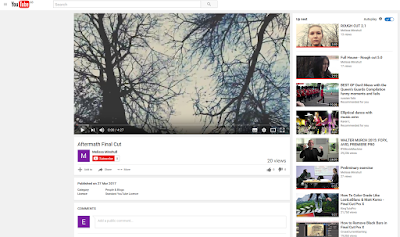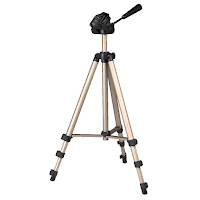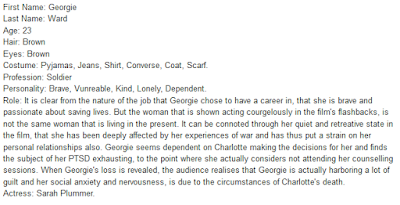Evaluation: Question 4
During the pre-production and post-production of our film, we used various digital technologies to help piece together our film. We set up a group blog using the blog-publishing service Blogger in order to track the creation of our film from pre-production to post-production. Blogger gives you the ability to publish documents online that people can view internationally. These documents can also include labels giving you the chance to 'tag' others in the post thus giving our group the opportunity to complete certain tasks together rather than individually to balance the workload and give us more time to prepare for filming. In these documents, we produced a script, shot list, character profiles, risk assessment and various shooting packs that we could easily access when out filming or at home when we were adding to our own work. We further made our blog more personal by using the initials of our first names as the blog title and made the blog background as one of our opening shots from the film to make it relevant to our film's plot.
 t t |
| Our blog layout suited the overall tone of the film. |
Research
Before starting filming on our film, we had to do in-depth research into Drama films that had a similar plot, characters and storylines in order to gain a thorough understanding of what our potential audience would expect and also explore reviews on these films from viewers on what they thought made these particular films successful or unsuccessful. This helped us to decide on what we should include, such as flashbacks to establish the relationship between our two main characters and a plot twist that was carefully hinted at throughout the film so that we could heighten the audience's intrigue and surprise.
When researching film reviews, Metacritic and Rotten Tomatoes were used as they gave detailed information on similar films and gave opinions from a range of proffessional critics and public audiences. In conclusion, this was incredibly useful as these sites can be accessed from a range of media devices so we always had the opportunity to refer back to reviews when writing a script and shot list.
Contact
Due to the fact that not all group members live in the same area, we had to regularly comute from our homes to our filming locations. We knew that we had to find a way that we could all keep in touch so that none of us got lost when travelling nevertheless we further had to consider the benefits that a group chat would have in terms of voicing our ideas and keeping each other up to date on what needed completing on the blog. We decided that Facebook Messenger would be the most appropriate form of communication outside of college, as we could all easily access the social media network on our phones and it allowed us to share pictures, videos and voice messages very easily.
 | ||
| A screenshot from our group chat. |
Finally, after extensive research into the codes and conventions of our film, we began work on writing a script. Celtx is a media pre-production software that was created with the purpose of generating and organising media projects along the lines of screenplays, stage plays, audio plays, documentaries, games, comics and podcasts. I researched into how other scripts had been put together using SimplyScripts, a site that works as a database full of downloadable film scripts, that people can use for their own entertainment or in my case, as an influence in writing their own scripts.
 |
| A screenshot from our script. |
Photoshop
Adobe Photoshop is a raster graphics editor that allows the user to create and edit images interactively as well as limited abilities to render text, 3D graphics and video. Photoshop proved seriously useful in creating our film posters. However, I was very new to this software and so I had to play around with the software for an hour to understand it's wide range of features and become more confident. I watched the below tutorial to help me become more resourceful with using Photoshop.
I especially liked the features that allowed us to mess with the brightness of our photos, in order to make the text stand out and draw attention to our lead characters. This enabled us to emphasise the Drama genre of our film as we maintained a-lot of simplicity in our film poster in order to make sure we could echo the isolation of our main character.
We also merged two images in the poster to reinforce the relationship between our two main characters. We positioned Charlotte behind Georgie to show that there is some distance between them, foreshadowing that Charlotte is in Georgie's memories.
Premiere Pro: |
| I have focused the image of Charlotte that we merged onto the one of Georgie. |
 |
| Here is an example of some of the tools we used during the creation of our poster. |
Premiere Pro was a film editing software that we utilised constantly throughout our film making process. Although Premiere Pro was used mainly for the creative process of our final film, we also used it's features for planning and preparation.
 |
| We heightened the saturation of this clip to further highlight that this was a flashback sequence and not set in the same time frame as the rest of the film. |
 |
| A screenshot showing the effects we used on our titles. |
 |
| Here you can see how we edited the volume of the music and sound effects so they worked smoothly together. |
Continous Edit:
Elliptical Edit:
Youtube:
To post all of our videos we used Melissa's Youtube account. Youtube was incredibly useful as it permitted us to share our work with a wider demographic, research into other short film maker's trailers and credits and tutorials that could help us with new technology such as photoshop. Before we uploaed any of our photos to Youtube, we had to export them from Premiere Pro and convert them into another file. This could sometimes be a very lengthy process as the longer the length of the file, the longer the time it would take to upload and so we would have to be prepared to arrive early or stay behind to complete this. By uploading all of our videos onto this channel, we could remain organised and have the opportunity to look back on our work and see how much we had improved and if there were any scenes that needed altering.
 |
| Our Youtube page. |
Google Forms:
Zoom Recorder:
| The Zoom Recorder used to record dialogue for the radio trailer below. |
Camera/Tripod:

We used a Canon Legria HF G-25 to film Aftermath while connected to a tripod that could ensure that the camera wasn't going to be in danger of getting damaged as it was safe and secure on the tripod. A tripod can also aid with keeping the filming incredibly steady thus improving the overall quality of the film. We hadn't used this camera before and so we used filming the ellpitical journey as a way to get used to the camera's new features and experiment. The manual focus on the camera was useful as it would focus every individual shot and ensure that they all appeared of a very high definition. The tripod's retractable handles aided with incoporating high and low angle shots in our film to show when certain characters are in a position of power. We attempted to film more than just one shot of a certain scene as we wanted to make sure that we had plenty of film to work with in case we came across any complications with continuity or match on action. I really enjoyed working with this camera as it allowed us to express with complex shots such as focus pulls and gain a better understanding of working as a team and playing with each other's ideas.







































